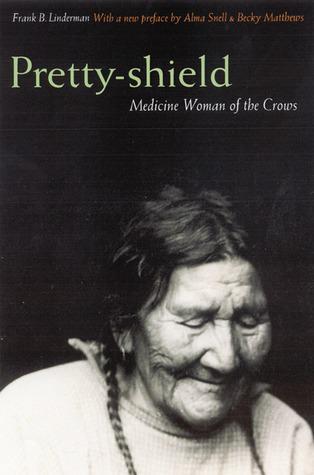Although there is a vast literature on ethnohistoric shamanism, not much of it discusses the way in which shamanic practice is gendered. This is an interesting omission that might be explained in several ways, including the possibility that shamans were more often than not male. Another possibility is that our ethnohistoric sources were more often than not male, which might have had distorting effects. For instance, there could have been societal restrictions that prevented male chroniclers from interacting with and observing shamanesses, and such restrictions might have worked in tandem with a European patriarchal perspective that rendered women in traditional societies more or less invisible. Whatever the case may be, there is little doubt that shamanesses are fairly rare in sizeable portions of the ethnohistoric record. This is especially true of the record for the historic Plains Indians.
Against this backdrop, I was pleasantly surprised to come across this passage in Memoirs of a White Crow Indian (1928):
Our official weather-prophet, Pretty Louse, was a medicine-woman. She was a trance clairvoyant and claimed to talk personally with the spirits. She was a very capable person, and in public matters her advice usually was good and was followed. She cured me of an earache and deafness. She made up and put into the ear some sort of tea. She received high fees and always had a herd of about a hundred horses. Often it would occur than some one would give her an extra buffalo-skin lodge, so she owned extra lodges. These she would trade off for horses. She was liberal, and she gave away lots of presents to needy Indians. The white people called her “the princess.”
Several things here deserve brief comment. The first is how unusual it is to find, at least in the Plains ethnohistoric record, mention of a woman whose role goes beyond instrumental types of healing (i.e., gathering and administration of herbs, setting of broken bones, and tending of wounds). I’ve had students ask me about this in the past, and usually have been at a loss to explain why women don’t appear in these roles more frequently. In the absence of better sources, I’ve been reduced to observing that nomadic hunter-gatherers are patriarchal in some ways and this may have extended to shamanic practice. But given this suggestive description of Pretty Louse, I suspect this is far from being the whole story, and that Plains tribes had many more women like her.
Another unusual feature of this all too brief description is the reference to trance clairvoyance which can entail spirit possession or channeling. While this is not uncommon in the larger ethnohistoric literature on shamanism, it seems to have been uncommon among the Plains Indians. The vision quest and guardian spirit complexes rarely if ever involved possession or channeling. This makes Pretty Louse doubly unusual.
The final thing worth noting is Pretty Louse’s apparently high socioeconomic and political standing among the Crow. This too is unusual, though there is some variability among the Plains tribes. Among the Lakota or Sioux, women rarely achieved rank or standing of this sort, yet they did among the Cheyenne. I suspect that at least some of this variability is attributable to the differing histories of each tribe as they irregularly dispersed onto the Great Plains during the 1600-1700s. The Crow, we know, were hunting-horticulturalists situated on the eastern edge of the Plains before moving west to the Wyoming-Montana plains and mountains. In the former setting, it’s possible that women may have had greater standing and influence. Once they moved onto the Plains, the primacy of warfare (for hunting territory and horses) could have altered this dynamic but not entirely erased it. Pretty Louse may have tapped into this historical and still-remembered legacy. Another Crow medicine-woman, Pretty Shield, certainly appears to have done so but she lived mostly in a Crow (reservation) society that had been substantially altered and disrupted by American imperialism.


